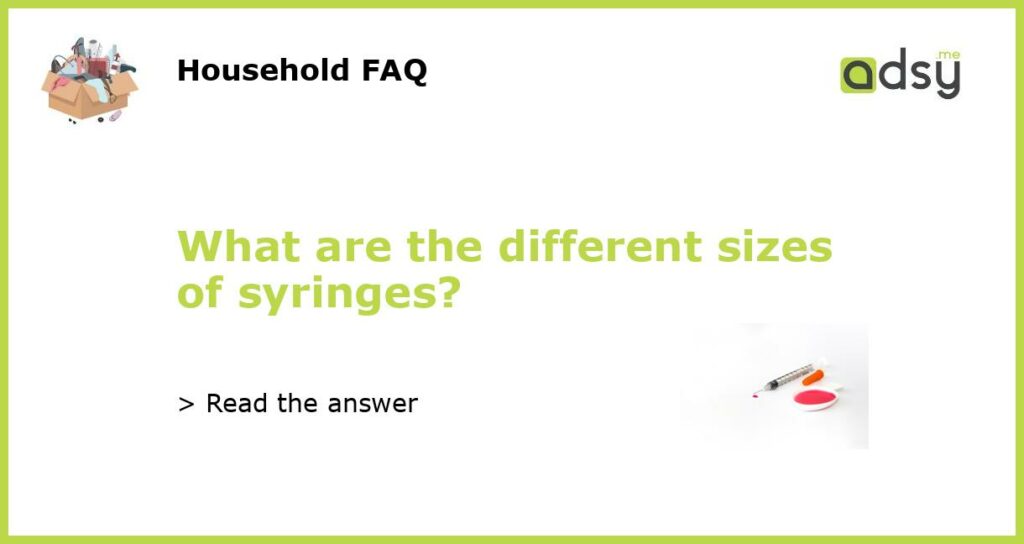Understanding the Different Sizes of Syringes
When it comes to medical procedures, syringes are an essential tool used for various purposes, such as administering medications, drawing blood samples, or delivering vaccinations. Syringes come in different sizes, and it’s important to understand these sizes to ensure the right syringe is used for each specific task. Let’s explore the different sizes of syringes and their applications.
The Importance of Syringe Size
Before delving into the different sizes of syringes, it’s crucial to understand why size matters in this context. Syringe size plays a critical role in the accuracy of medication administration and the comfort of the patient. Using the wrong syringe size can lead to measurement inaccuracies, dosage errors, or even discomfort or pain during injections.
Syringe Volume Measurements
Syringes are typically measured in two main units: milliliters (ml) and cubic centimeters (cc). These units are used interchangeably, as they represent the same volume. For example, a 5 ml syringe is equivalent to a 5 cc syringe. It’s important to note that both units measure volume rather than weight.
Common Syringe Sizes and Their Applications
Syringes come in various sizes, typically ranging from 0.5 ml to 60 ml. Here are some common syringe sizes and their applications:
- 0.5 ml and 1 ml: These are smaller syringes typically used for insulin administration in diabetes care. They are also suitable for small-dose medications.
- 3 ml: This is a versatile syringe size commonly used for subcutaneous injections, intramuscular injections, and oral medication administration.
- 5 ml: This syringe size is often used for intramuscular injections, irrigating wounds, or administering medications that require larger volumes.
- 10 ml: This larger syringe size is ideal for intramuscular injections, administering medications, or drawing blood samples.
- 20 ml and 30 ml: These syringe sizes are commonly used for feeding tube flushes, wound irrigation, or larger-dose medication administration.
- 60 ml: This is the largest syringe size and is generally used for high-volume medication administration or irrigation.
Specialty Syringe Sizes
In addition to the common sizes mentioned above, there are also specialty syringe sizes available for specific purposes:
- Insulin Syringes: These syringes are specifically designed for insulin administration and come with very thin needles to minimize pain and discomfort.
- Tuberculin Syringes: Tuberculin syringes are smaller in size and are primarily used for tuberculosis testing, as they allow for precise measurements in small quantities.
- Oral Syringes: These syringes have special markings and are primarily used for accurate liquid medication administration, such as oral antibiotics for children or elderly patients.
- Pre-Filled Syringes: Pre-filled syringes come with a pre-measured dosage of medication and are ready to use, eliminating the need for drawing medication from vials. These are commonly used for vaccines and certain specialty medications.
Consult with Healthcare Professionals
To ensure the appropriate syringe size is chosen for each specific medical procedure, it’s crucial to consult with healthcare professionals, such as doctors, nurses, or pharmacists. They can provide the necessary guidance and recommendations based on the specific requirements of the task at hand.






